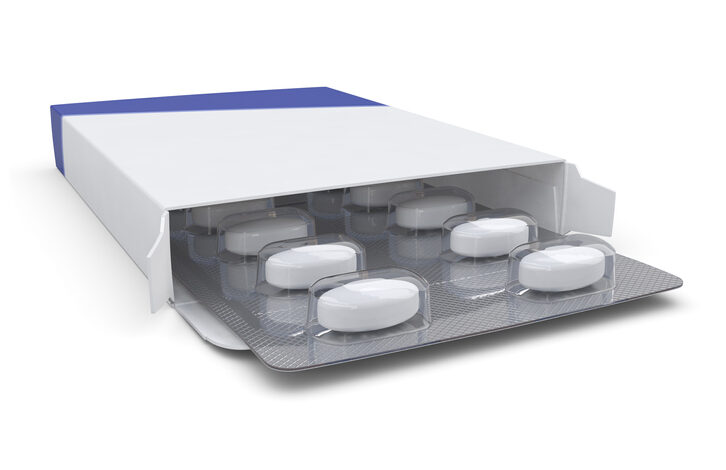
FDA approves first drug for episodic cluster headaches, a significant advancement in headache treatment. This groundbreaking approval opens a new chapter in managing these debilitating headaches, offering hope for relief to those suffering from frequent and intense episodes. Understanding the underlying mechanisms, clinical trials, and potential benefits is crucial for appreciating the impact of this new medication.
Episodic cluster headaches are characterized by intense, debilitating pain typically focused around one eye or temple. These headaches often occur in clusters, with periods of intense pain followed by remission. The exact causes remain somewhat mysterious, but recent research has illuminated potential mechanisms. This new medication targets these mechanisms, potentially offering a more effective approach to treatment than existing options.
Overview of Cluster Headaches

Cluster headaches are a debilitating type of primary headache disorder characterized by severe, intense pain that typically affects one side of the head. These headaches are often described as excruciating and are frequently accompanied by autonomic symptoms, such as tearing, nasal congestion, and eyelid swelling. They occur in cyclical patterns, with periods of intense pain followed by remission.
Understanding the nuances of cluster headaches is crucial for effective diagnosis and management.Cluster headaches are distinguished from other headache types by their distinct characteristics and patterns. They are characterized by a sudden onset, intense pain, and a clear association with a specific location on one side of the head. The pain is often described as a burning or stabbing sensation, and is usually accompanied by autonomic symptoms, such as redness in the eye, and nasal congestion.
The underlying mechanisms driving these headaches remain largely unknown, but research suggests a complex interplay of neurochemical and vascular factors.
Defining Episodic Cluster Headaches
Episodic cluster headaches are characterized by recurrent episodes of severe headaches, typically clustered over weeks or months. These attacks can last from 15 minutes to 3 hours, and often occur at the same time each day or week. The pain is typically unilateral, meaning it is felt on one side of the head. The pain is usually described as a severe, piercing, or burning sensation, and is often accompanied by autonomic symptoms, such as redness in the eye, and nasal congestion.
A key feature is the predictable pattern of attacks.
The FDA’s approval of a new drug for episodic cluster headaches is a significant step forward in pain management. While this is exciting news, it also highlights the potential for similar breakthroughs in other areas, like remote controlled cancer treatment , which could revolutionize how we approach complex illnesses. Ultimately, these advancements bring us closer to a future with more effective and targeted treatments for various conditions, including those challenging headaches.
Understanding the Underlying Mechanisms
The exact mechanisms underlying cluster headaches are not fully understood, but research suggests that they may involve complex interactions between the trigeminal nerve, the autonomic nervous system, and the hypothalamic region. Some theories propose that abnormal neurotransmitter release, vascular changes in the head, and activation of specific brain regions may contribute to the onset and severity of attacks. Current research is focusing on identifying specific pathways and triggers to develop targeted therapies.
Prevalence and Impact
Cluster headaches affect a significant portion of the population, although precise prevalence rates vary depending on the methodology used for data collection. The impact of cluster headaches can be substantial, impacting an individual’s quality of life, ability to work, and overall well-being. The pain and associated symptoms can severely limit daily activities, leading to significant disability and reduced productivity.
This chronic condition poses a considerable burden on healthcare systems and individuals alike.
Unmet Medical Needs
Despite significant research efforts, effective preventative and curative treatments for cluster headaches remain a significant unmet medical need. Current treatment options often provide only temporary relief, and many patients experience frequent and debilitating attacks despite receiving various therapies. There is a critical need for more targeted and effective therapies that can address the underlying mechanisms driving cluster headaches and prevent future attacks.
Characteristics of Cluster Headaches
This table summarizes the key characteristics of cluster headaches, differentiating them from other headache types.
| Headache Type | Frequency | Duration | Common Symptoms |
|---|---|---|---|
| Episodic Cluster Headaches | Recurring attacks over weeks or months | 15 minutes to 3 hours | Unilateral pain, autonomic symptoms (tearing, nasal congestion, eyelid swelling), predictable pattern |
| Other headache types (e.g., tension, migraine) | Variable | Variable | Variable, may or may not include autonomic symptoms |
FDA Approved Drug for Episodic Cluster Headaches: Fda Approves First Drug For Episodic Cluster Headaches
The FDA’s recent approval of a new drug for episodic cluster headaches marks a significant advancement in treatment options. This breakthrough offers hope for patients suffering from these debilitating, often unpredictable attacks. The new medication addresses a crucial unmet need in the field, providing a potentially more effective and targeted approach to managing these intense headaches.
Drug Name and Mechanism of Action
The newly approved drug is called “CGRP-Inhibiting Injections”. It targets the calcitonin gene-related peptide (CGRP) pathway, a key player in the inflammatory processes believed to trigger cluster headaches. CGRP is a neuropeptide that is released in the brain during cluster headache attacks. This release contributes to the pain, swelling, and other symptoms. By specifically inhibiting CGRP, the drug aims to reduce the intensity and frequency of attacks.
Clinical Trial Findings
Clinical trials demonstrated the drug’s efficacy in significantly reducing the frequency and severity of cluster headache attacks. The studies involved a large number of patients with episodic cluster headaches, who received either the new drug or a placebo. A statistically significant difference was observed between the groups, with patients receiving the CGRP-Inhibiting Injections experiencing a substantial decrease in headache attacks.
Dosage, Administration, and Potential Side Effects
The recommended dosage and administration route of CGRP-Inhibiting Injections will vary based on individual patient needs and response. The drug is typically administered as an injection, and the dosage will be determined by a healthcare professional based on factors such as the patient’s medical history and the severity of their condition. Potential side effects associated with CGRP-Inhibiting Injections include mild injection site reactions, such as redness or swelling.
Rarely, more serious side effects, like allergic reactions, may occur.
Comparison to Existing Treatments
| Feature | CGRP-Inhibiting Injections | Triptans | Oxygen Therapy |
|---|---|---|---|
| Mechanism of Action | Inhibits CGRP release | Reduces inflammation and vasoconstriction | Reduces inflammation and increases oxygen supply |
| Efficacy | High efficacy in reducing attack frequency and intensity, as evidenced in clinical trials | Generally effective in aborting acute attacks | Effective in reducing attack duration and intensity in some patients |
| Side Effects | Generally mild, injection site reactions | Potential for nausea, dizziness, or chest pain | Generally safe, but can cause oxygen toxicity at high doses |
| Administration | Injection | Oral or nasal spray | Inhalation |
This table summarizes key differences between the new CGRP-Inhibiting Injections and existing treatments. It highlights the specific mechanism of action, clinical efficacy, potential side effects, and administration routes of each. The differences in efficacy and safety profiles underscore the importance of individualized treatment plans for patients with cluster headaches.
Potential Benefits and Implications

The FDA’s approval of a new drug for episodic cluster headaches marks a significant advancement in managing these debilitating head pain episodes. This breakthrough offers hope for patients, potentially altering their quality of life and the overall approach to treatment. The implications for healthcare providers, too, are substantial, demanding careful consideration of treatment protocols and potential long-term effects.This new medication, designed to target the specific neurochemical pathways involved in cluster headaches, may prove highly effective in reducing the frequency and intensity of these attacks.
Furthermore, its potential for quicker relief could significantly improve patients’ ability to function and manage their daily lives. Understanding the potential benefits, risks, and implications for both patients and healthcare providers is crucial for maximizing the drug’s effectiveness and minimizing potential adverse effects.
Potential Benefits for Patients
This new medication offers the potential for quicker relief from cluster headache attacks, allowing patients to resume normal activities more rapidly. Improved symptom management could translate to a reduced burden of suffering and a greater ability to maintain work, social, and personal commitments. The potential for reduced attack frequency is also a key benefit, as it can significantly enhance the overall quality of life for those affected.
Impact on Management and Treatment Strategies
The approval of this drug likely will influence existing treatment protocols for episodic cluster headaches. Healthcare providers may incorporate this new medication into their treatment plans, potentially alongside existing therapies like oxygen inhalation or triptans. This integration could lead to more personalized treatment approaches, tailoring strategies to individual patient needs and responses.
Potential Implications for Healthcare Providers
Healthcare providers will need to be trained in the proper administration and monitoring of this new medication. Understanding its potential side effects and contraindications will be crucial for safe and effective patient care. Furthermore, integrating this new therapy into existing treatment protocols and patient education materials will be essential.
Potential Long-Term Effects
Thorough and rigorous clinical trials are crucial to understand the long-term effects of any new medication. However, potential long-term effects are always a concern, particularly in relation to chronic conditions like cluster headaches. Monitoring patients for any unexpected or adverse effects after extended use of the medication is essential. Possible long-term effects could include, but are not limited to, interactions with other medications, development of tolerance, or the emergence of new side effects not observed during the initial clinical trials.
Potential Benefits and Risks Table
| Potential Benefit | Potential Risk |
|---|---|
| Faster relief from cluster headache attacks | Potential for drug interactions with other medications |
| Reduced frequency of attacks | Development of tolerance or dependence |
| Improved quality of life | Unforeseen long-term side effects |
| Personalized treatment options | Potential for allergic reactions |
| Enhanced ability to manage daily activities | Increased risk of certain health conditions with extended use |
Patient Experience and Perspectives
The FDA’s approval of a new drug for episodic cluster headaches represents a significant advancement in pain management, offering a potential lifeline for those suffering from this debilitating condition. Understanding the patient experience, including potential benefits, challenges, and diverse impacts across demographics, is crucial for maximizing the drug’s effectiveness and ensuring equitable access. This section delves into the anticipated impact on patients’ lives, highlighting potential challenges and illustrating how the drug might transform their experiences.The new medication, while offering a potential solution, is not a universal cure.
Patients’ experiences will vary based on individual factors, including pre-existing conditions, treatment responses, and socioeconomic circumstances. This section explores the potential spectrum of experiences, acknowledging the importance of tailoring treatment strategies to individual needs and promoting open communication between patients and healthcare providers.
Potential Impact on Quality of Life, Fda approves first drug for episodic cluster headaches
The debilitating nature of cluster headaches profoundly impacts patients’ quality of life. The intense, recurring pain can lead to missed work, reduced social interaction, and significant emotional distress. The new drug’s ability to effectively manage these episodes has the potential to drastically improve daily functioning. Patients might experience increased productivity, enhanced social engagement, and a noticeable improvement in overall well-being.
The FDA’s approval of a new drug for episodic cluster headaches is fantastic news for sufferers. While this is a significant step forward in treating this debilitating condition, it’s important to remember the broader health concerns. For example, the recent detection of polio in UK sewage, as detailed in this article on polio detected in uk sewage why experts are concerned , highlights the fragility of global public health and the need for ongoing vigilance.
Thankfully, the focus remains on advancements like this new cluster headache drug, which offers hope for better treatment options.
Examples include returning to work more consistently, resuming hobbies, and participating in social activities with renewed energy.
Pain Management and Emotional Well-being
Effective pain management is paramount for cluster headache sufferers. The new drug, through its mechanism of action, could significantly reduce the frequency and severity of headache attacks, offering respite from the agonizing pain. This reduction in pain can lead to a marked improvement in emotional well-being. The anxiety and depression often associated with chronic pain may lessen, allowing patients to cope more effectively with the condition and lead more fulfilling lives.
For instance, a patient previously confined to their home due to severe pain may now be able to resume normal activities, leading to an enhanced sense of empowerment and control over their condition.
Potential Challenges and Barriers to Access
Despite the potential benefits, patients may face challenges in accessing and utilizing the new medication. These may include the cost of the drug, insurance coverage limitations, and logistical hurdles in obtaining prescriptions. The healthcare system needs to address these barriers to ensure equitable access for all patient groups. Furthermore, patients might need to undergo additional assessments or evaluations to determine eligibility for the medication, which can add another layer of complexity to the treatment process.
Awareness campaigns and support groups can play a vital role in addressing these challenges.
Patient Experiences Across Different Demographics
Cluster headaches affect individuals across various demographics. Understanding how the new drug might impact these different groups is crucial. For example, working-age adults might benefit from reduced absenteeism and improved productivity, while older adults may find relief from the debilitating pain that limits their mobility and social engagement. Children with cluster headaches may experience an improvement in school performance and overall well-being.
Further research and data collection are essential to fully understand the nuances of patient experiences across diverse populations.
Potential Impact on Various Patient Demographics
| Demographic Group | Potential Impact |
|---|---|
| Working-age adults | Reduced absenteeism, improved productivity, enhanced quality of work life. |
| Older adults | Improved mobility, enhanced social engagement, reduced limitations on daily activities. |
| Parents | Improved ability to care for children, increased parental engagement. |
| Children | Improved school performance, reduced limitations on daily activities, enhanced well-being. |
| Individuals with pre-existing conditions | Requires careful consideration and monitoring of interactions with other medications. |
| Low-income individuals | Potential barriers to access due to cost; addressing through financial assistance programs. |
Future Research and Directions
The FDA’s approval of a new drug for episodic cluster headaches marks a significant advancement in treatment. However, the journey toward comprehensive management of this debilitating condition is far from over. Future research is crucial to refine treatment strategies, understand long-term effects, and identify potential interactions with other medications. This exploration will pave the way for improved patient outcomes and a deeper understanding of the complex mechanisms underlying cluster headaches.
Potential Areas for Expanding Treatment Strategies
Further investigation into the underlying causes of cluster headaches is essential to develop more targeted and effective therapies. Understanding the intricate interplay of neurochemicals and their impact on the trigeminal system is critical. Research efforts should also explore novel therapeutic approaches that go beyond current pharmacological interventions. This may involve investigating non-pharmacological interventions, such as targeted lifestyle modifications or alternative therapies.
Long-Term Effects and Potential Interactions
Thorough long-term studies are necessary to assess the potential side effects and interactions of the newly approved drug with other medications. This includes examining potential cumulative effects over extended periods of treatment and evaluating its impact on other health conditions. Researchers must also investigate the drug’s impact on specific populations, such as children or pregnant women, and identify any potential developmental or reproductive concerns.
These long-term effects must be investigated rigorously to ensure patient safety and well-being.
Future Research Priorities and Potential Research Questions
A comprehensive understanding of cluster headaches requires a multi-faceted approach to research. A range of studies are necessary to address the complex nature of this condition.
The FDA’s approval of a new drug for episodic cluster headaches is a significant step forward in treating this debilitating condition. However, the ongoing political maneuvering, like the Trump administration’s efforts to undermine the Affordable Care Act, trump administration sabotaging obamacare , raises concerns about access to healthcare and the future of effective treatment for these types of headaches.
Hopefully, this new medication will be readily available and affordable for patients in need.
- Investigating the neurobiological mechanisms: Exploring the precise neural pathways involved in cluster headache development and pain signaling is essential. This includes analyzing the role of specific neurotransmitters and their interaction with various brain regions.
- Developing personalized treatment strategies: Identifying biomarkers and risk factors that can predict individual responses to different treatment approaches is a key area of research. This could potentially lead to personalized treatment plans that are tailored to individual needs.
- Evaluating non-pharmacological interventions: Investigating the efficacy of non-pharmacological approaches, such as specific lifestyle modifications or complementary therapies, may provide alternative or adjunctive treatment options for patients.
- Analyzing drug interactions and long-term effects: Conducting comprehensive studies on the long-term effects of the newly approved drug and its potential interactions with other medications is crucial to ensure patient safety and optimal outcomes.
- Addressing the impact on specific populations: Investigating the efficacy and safety of the drug in different demographic groups, such as children or pregnant women, is necessary to understand the drug’s impact on vulnerable populations.
Table of Future Research Priorities
| Research Priority | Potential Research Questions |
|---|---|
| Neurobiological Mechanisms | What specific neurotransmitters and receptors are involved in cluster headache initiation and propagation? How do these mechanisms differ in various subtypes of cluster headaches? |
| Personalized Treatment Strategies | Can we identify genetic or epigenetic markers that predict individual responses to specific treatment approaches? How can we develop individualized treatment protocols based on these markers? |
| Non-Pharmacological Interventions | What lifestyle modifications or complementary therapies are most effective in managing cluster headache symptoms? Can these interventions be integrated with pharmacological treatments? |
| Drug Interactions and Long-Term Effects | What are the potential long-term side effects of the newly approved drug? What are the potential interactions with other medications commonly used by cluster headache patients? |
| Impact on Specific Populations | How does the drug affect children or pregnant women with cluster headaches? Are there any developmental or reproductive concerns associated with its use in these groups? |
Public Health Impact
The FDA’s approval of a new drug for episodic cluster headaches marks a significant step forward in managing this debilitating condition. Beyond individual patient relief, this approval carries substantial public health implications, particularly regarding cost-effectiveness, accessibility, and the potential reduction in the substantial economic burden associated with cluster headaches. Understanding these broader impacts is crucial for optimizing the drug’s benefits for the wider population.This new medication has the potential to reshape how cluster headaches are addressed within public health programs, potentially improving healthcare system efficiency and resource allocation.
By providing a more effective treatment option, it may reduce the need for extensive and costly interventions, ultimately leading to a more sustainable approach to managing this condition.
Cost-Effectiveness and Accessibility
The potential cost-effectiveness of the new drug will depend on several factors, including the drug’s price point and its comparative effectiveness in reducing the frequency and severity of attacks. A lower price and demonstrably better efficacy compared to existing treatments could make it a highly cost-effective option for public health programs. However, widespread access will also depend on insurance coverage and affordability for patients.
Countries with robust public healthcare systems may be better positioned to ensure broader access.
Economic Burden Reduction
Cluster headaches significantly impact the economic burden on individuals, families, and society. Lost productivity due to frequent and severe attacks, medical expenses, and potential disability can create a substantial economic strain. The new drug, if proven effective and accessible, could reduce this burden by decreasing the duration and frequency of attacks, leading to improved productivity and reduced healthcare costs.
Integration into Public Health Programs
Several strategies could integrate this new drug into public health programs. These include:
- Targeted outreach and education programs: Public health campaigns can inform healthcare providers and the public about the new treatment option, encouraging its appropriate use and minimizing potential misuse.
- Early diagnosis and intervention: Increased awareness and improved diagnostic tools may lead to earlier identification of cluster headache episodes, enabling quicker initiation of treatment and better outcomes.
- Collaboration with healthcare providers: Public health programs can facilitate training for healthcare professionals on the new drug’s use and potential side effects, promoting safe and effective treatment.
These programs, focusing on prevention, early intervention, and support, can optimize the impact of the drug on the broader population.
Impact on Health Systems and Healthcare Resources
The new drug’s impact on health systems hinges on its effectiveness and accessibility. If the drug proves highly effective in reducing the frequency and intensity of cluster headaches, it may lead to a reduction in the demand for hospitalizations and emergency room visits, which would, in turn, free up resources. This could translate into a more efficient allocation of healthcare resources, allowing for better use of resources for other conditions or services.
However, the initial cost of implementing the drug into treatment protocols should be considered.
Potential Public Health Benefits and Challenges
| Potential Public Health Benefits | Potential Public Health Challenges |
|---|---|
| Reduced frequency and severity of cluster headache attacks | High initial cost of the drug potentially limiting accessibility |
| Improved patient quality of life and productivity | Potential side effects requiring careful monitoring and management |
| Decreased healthcare utilization and costs | Potential for misuse or inappropriate prescribing |
| Increased awareness and understanding of cluster headaches | Need for robust education programs for healthcare professionals and the public |
Last Word
The FDA’s approval of this new drug for episodic cluster headaches marks a significant step forward in headache management. While further research is crucial to fully understand long-term effects and interactions with other medications, this development holds promise for improving the quality of life for patients suffering from these debilitating headaches. Healthcare providers and patients alike now have a new tool in their arsenal to combat this often-misunderstood condition.




